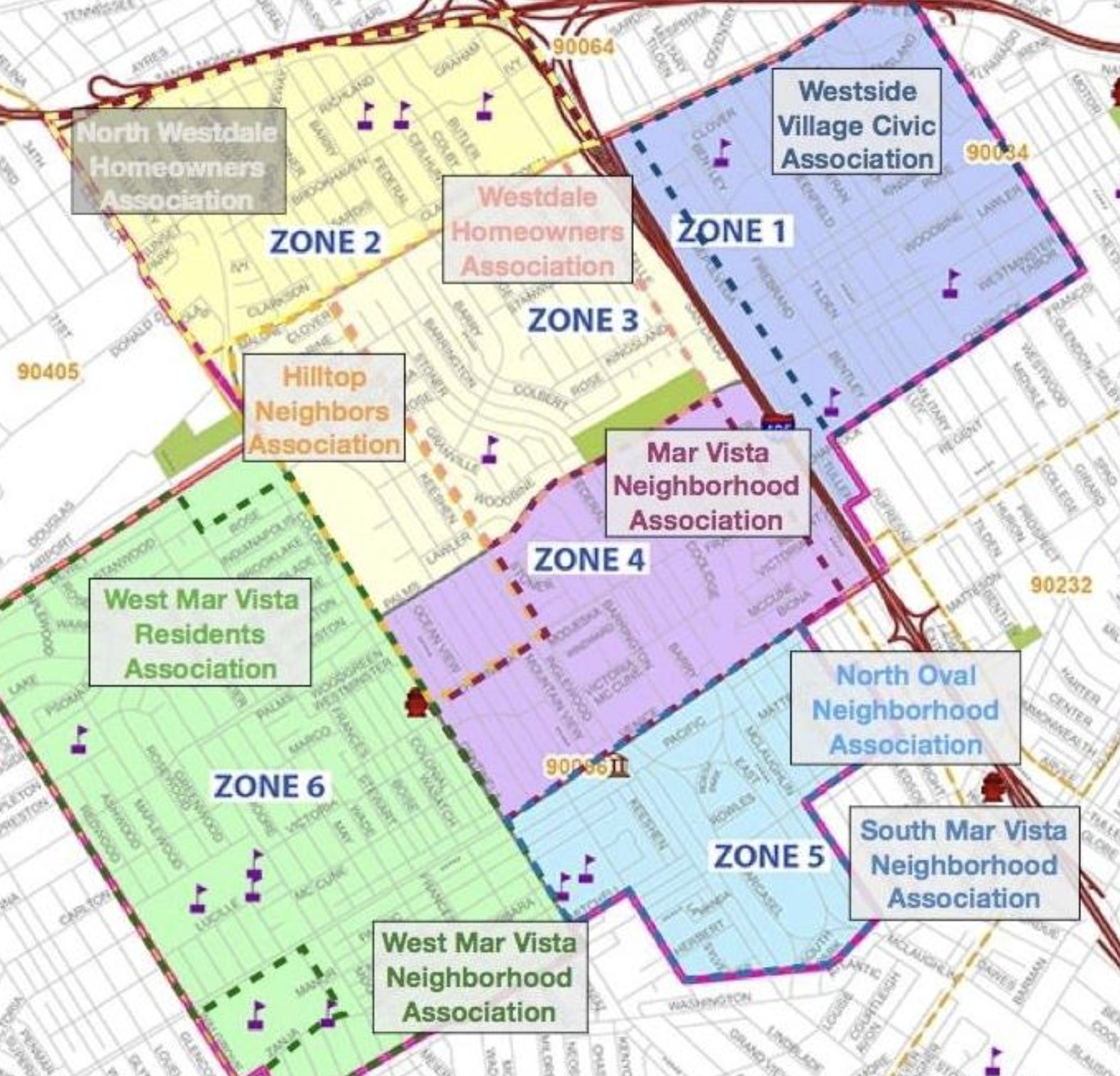LA’s neighborhood councils were created to make city government more democratic and accessible. Yet the Mar Vista Community Council makes clear just how exclusionary these bodies have become. One of the council’s most frequently shared graphics divides Mar Vista into six zones, each explicitly labeled with the local homeowners association that dominates it: Westdale Homeowners Association, Westside Village Civic Association, North Westdale Homeowners Association, and others. The map looks less like a community representation than a federation of HOAs. It unintentionally exposes how the council’s structure and leadership are shaped by property owners rather than renters, workers, or younger residents. This alignment with homeowner associations defines the council’s politics and priorities.
The next item on the agenda takes things even further. The council will consider taking a position against SB 79, a state bill that would hold wealthy coastal cities accountable for building their share of affordable housing near transit. As Mar Vista Voice has reported, opponents of SB 79 have spread misleading claims about the bill, suggesting it overrides local zoning or forces demolition of existing housing. In reality, SB 79 leaves neighborhoods like Mar Vista almost entirely untouched. The bill’s provisions only apply within a half mile of major transit corridors and require affordability standards that already exceed what is typical for new development in the area. Nearly all of Mar Vista’s single-family zones, including its low-density interior blocks, are unaffected. Yet this is precisely the kind of neighborhood that mobilizes against the bill, stoking fear and misinformation to defend exclusionary zoning.
SB 79 is narrowly tailored to target regions that have historically resisted their share of affordable housing production. It does not dismantle local plans or mandate large-scale redevelopment but simply ensures that affluent, high-resource neighborhoods like those on the Westside participate fairly in meeting state housing goals. The loudest opposition has come not from communities that would see meaningful change but from those like Mar Vista that benefit from maintaining scarcity. By opposing SB 79, the Mar Vista Community Council is effectively defending a system of segregation and scarcity that has made Los Angeles one of the most unaffordable cities in the country.
The council is also set to weigh in on a proposal to modernize the city’s building code through what’s known as single stairway reform. The reform would allow certain six-story apartment buildings to use a single staircase rather than two, making it easier to design smaller, less expensive, and better-ventilated buildings without compromising fire safety. Culver City recently adopted this reform, joining a growing national movement to update outdated codes that inflate construction costs and limit design options. No evidence shows that single-stair buildings are unsafe when equipped with modern sprinklers and safety systems. Yet given the MVCC’s track record and Councilmember Traci Park’s skepticism of the proposal, it is almost certain that the committee will oppose it as well.
Another agenda item targets a proposed maximum indoor temperature standard for residential units. The policy aims to protect tenants during extreme heat, which has become one of the most dangerous consequences of climate change in Los Angeles. For renters in older, poorly insulated buildings, indoor temperatures can climb into triple digits. Despite the clear public health stakes, the discussion will likely focus on the burden to landlords rather than the right of tenants to live in safe, habitable homes. This reflects a broader pattern in which neighborhood councils prioritize property owners’ concerns over the well-being of renters.
None of this is accidental. Neighborhood councils like Mar Vista’s are structured in ways that favor homeowners and organized homeowner associations. Turnout in neighborhood council elections is extremely low, and renters, younger residents, and working families are vastly underrepresented. The result is a self-selecting body that speaks for property owners rather than for the broader community. City officials then treat their resolutions as a proxy for “community input,” using them to justify opposition to housing and tenant protections.

